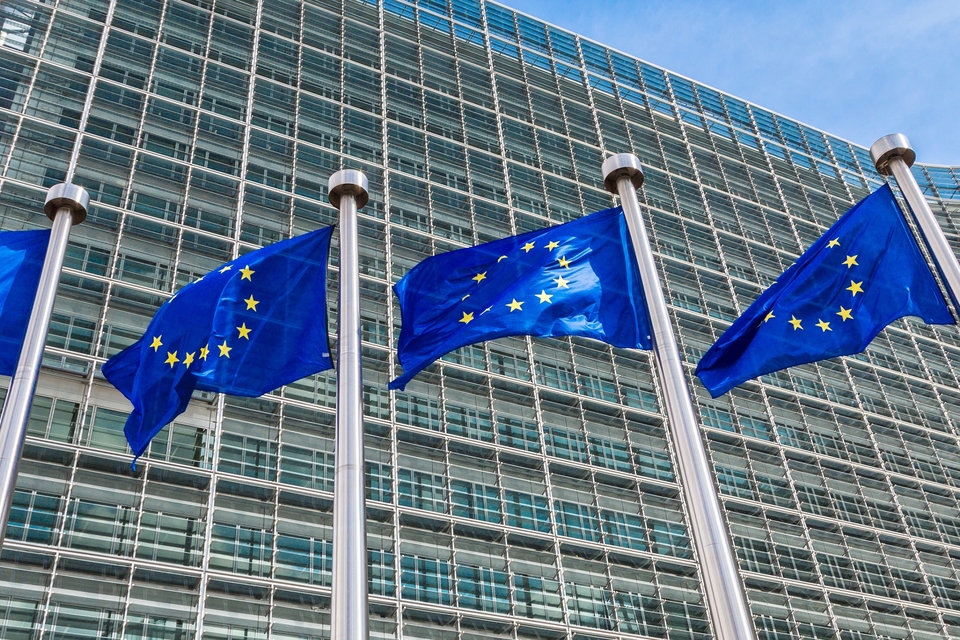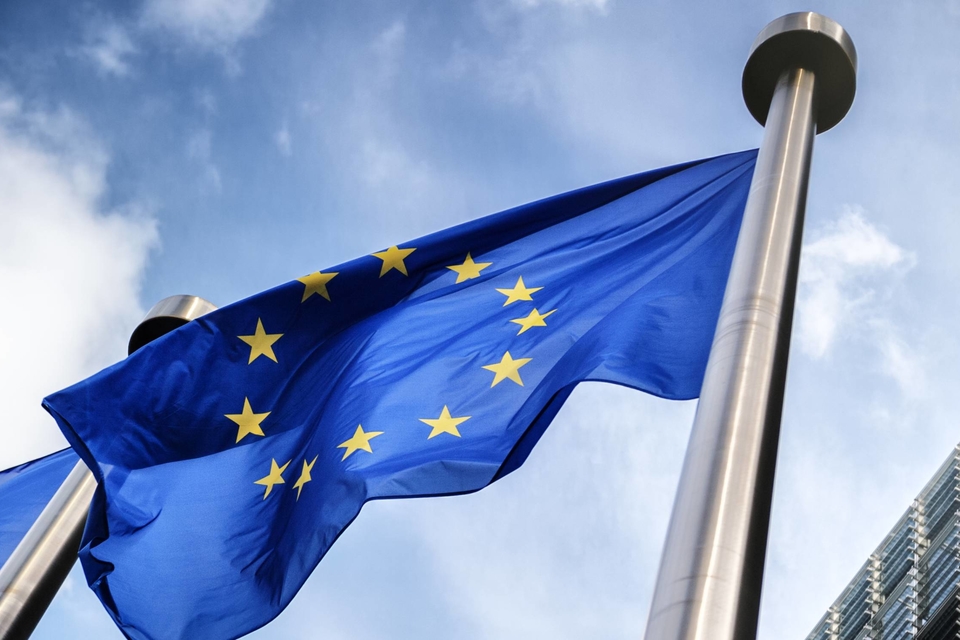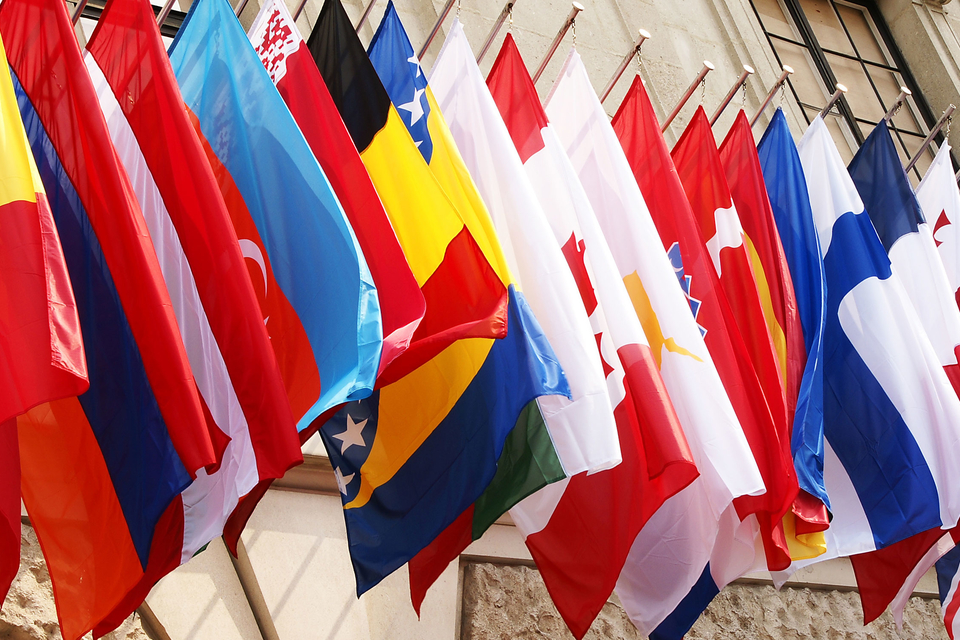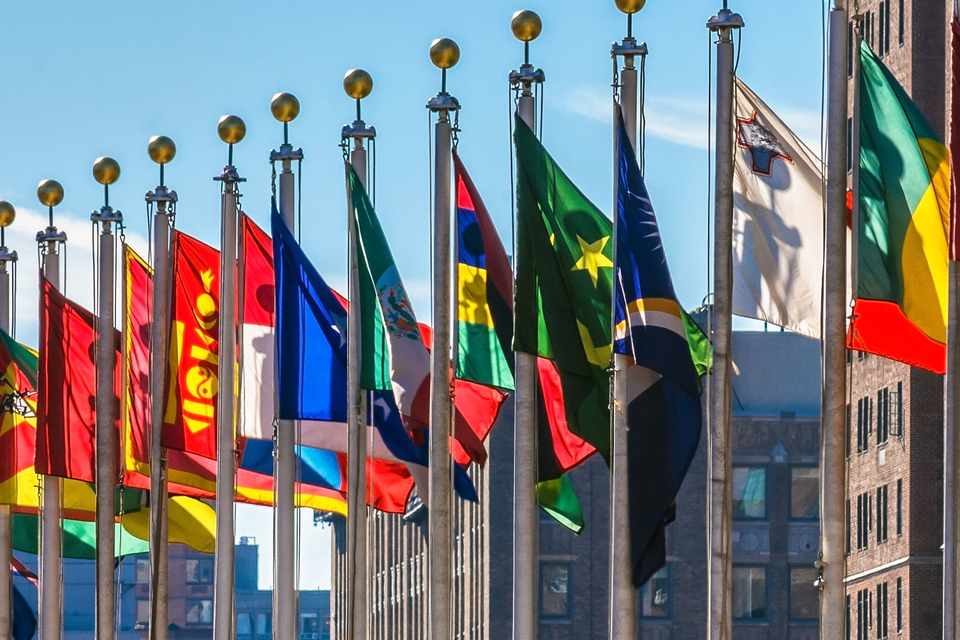African Union
The African Union's Continental AI Strategy sets the stage for a unified approach to AI governance across the continent.

Artificial intelligence (AI) has made enormous strides in recent years and has increasingly moved into the public consciousness.
Subscribe
We encourage you to subscribe to receive AI-related updates.
Explore Trendscape Our take on the interconnected global trends that are shaping the business climate for our clients.
Increases in computational power, coupled with advances in machine learning, have fueled the rapid rise of AI. This has brought enormous opportunities, as new AI applications have given rise to new ways of doing business. It has also brought potential risks, from unintended impacts on individuals (e.g., AI errors harming an individual's credit score or public reputation) to the risk of misuse of AI by malicious third parties (e.g., by manipulating AI systems to produce inaccurate or misleading output, or by using AI to create deepfakes).
Governments and regulatory bodies around the world have had to act quickly to try to ensure that their regulatory frameworks do not become obsolete. In addition, international organizations such as the G7, the UN, the Council of Europe and the OECD have responded to this technological shift by issuing their own AI frameworks. But they are all scrambling to stay abreast of technological developments, and already there are signs that emerging efforts to regulate AI will struggle to keep pace. In an effort to introduce some degree of international consensus, the UK government organized the first global AI Safety Summit in November 2023, with the aim of encouraging the safe and responsible development of AI around the world. The EU is also implementing the first comprehensive horizontal legal framework for the regulation of AI systems across EU Member States (the EU AI Act is addressed in more detail here: AI watch: Global regulatory tracker - European Union, and you can read our EU AI Act Handbook here).
Most jurisdictions have sought to strike a balance between encouraging AI innovation and investment, while at the same time attempting to create rules to protect against possible harms. However, jurisdictions around the world have taken substantially different approaches to achieving these goals, which has in turn increased the risk that businesses face from a fragmented and inconsistent AI regulatory environment. Nevertheless, certain trends are becoming clearer at this stage:
Businesses in almost all sectors need to keep a close eye on these developments to ensure that they are aware of the AI regulations and forthcoming trends, in order to identify new opportunities and new potential business risks. But even at this early stage, the inconsistent approaches each jurisdiction has taken to the core questions of how to regulate AI is clear. As a result, it appears that international businesses may face substantially different AI regulatory compliance challenges in different parts of the world. To that end, this AI Tracker is designed to provide businesses with an understanding of the state of play of AI regulations in the core markets in which they operate. It provides analysis of the approach that each jurisdiction has taken to AI regulation and provides helpful commentary on the likely direction of travel.
Because global AI regulations remain in a constant state of flux, this AI Tracker will develop over time, adding updates and new jurisdictions when appropriate. Stay tuned, as we continue to provide insights to help businesses navigate these ever-evolving issues.
The African Union's Continental AI Strategy sets the stage for a unified approach to AI governance across the continent.

Voluntary AI Ethics Principles guide responsible AI development in Australia, with potential reforms under consideration.

The enactment of Brazil's proposed AI Regulation remains uncertain with compliance requirements pending review.

AIDA expected to regulate AI at the federal level in Canada but provincial legislatures have yet to be introduced.

The Interim AI Measures is China's first specific, administrative regulation on the management of generative AI services.

Despite congressional activity on AI in Colombia, regulation remains unclear and uncertain.

The Council of Europe is developing a new Convention on AI to safeguard human rights, democracy, and the rule of law in the digital space covering governance, accountability and risk assessment.

The successful implementation of the EU AI Act into national law is the primary focus for the Czech Republic, with its National AI Strategy being the main policy document.

The EU introduces the pioneering EU AI Act, aiming to become a global hub for human-centric, trustworthy AI.

France actively participates in international efforts and proposes sector-specific laws.

The G7's AI regulations mandate Member States' compliance with international human rights law and relevant international frameworks.

Germany evaluates AI-specific legislation needs and actively engages in international initiatives.

Hong Kong lacks comprehensive AI legislative framework but is developing sector-specific guidelines and regulations, and investing in AI.

National frameworks inform India’s approach to AI regulation, with sector-specific initiatives in finance and health sectors.

Israel promotes responsible AI innovation through policy and sector-specific guidelines to address core issues and ethical principles.


Japan adopts a soft law approach to AI governance but lawmakers advance proposal for a hard law approach for certain harms.

Kenya's National AI Strategy and Code of Practice expected to set foundation of AI regulation once finalized.

Nigeria's draft National AI Policy underway and will pave the way for a comprehensive national AI strategy.

Position paper informs Norwegian approach to AI, with sector-specific legislative amendments to regulate developments in AI.

The OECD's AI recommendations encourage Member States to uphold principles of trustworthy AI.

Saudi Arabia is yet to enact AI Regulations, relying on guidelines to establish practice standards and general principles.

Singapore's AI frameworks guide AI ethical and governance principles, with existing sector-specific regulations addressing AI risks.

South Africa is yet to announce any AI regulation proposals but is in the process of obtaining inputs for a draft National AI plan.

South Korea's AI Act has been promulgated as the fundamental body of law governing AI.

Spain creates Europe's first AI supervisory agency and actively participates in EU AI Act negotiations.

Switzerland's National AI Strategy sets out guidelines for the use of AI, and aims to finalize an AI regulatory proposal in 2025.

Draft laws and guidelines are under consideration in Taiwan, with sector-specific initiatives already in place.

Turkey has published multiple guidelines on the use of AI in various sectors, with a bill for AI regulation now in the legislative process.

Mainland UAE has published an array of decrees and guidelines regarding regulation of AI, while the ADGM and DIFC free zones each rely on amendments to existing data protection laws to regulate AI.

The UK prioritizes a flexible framework over comprehensive regulation and emphasizes sector-specific laws.

The UN's AI resolutions encourage Member States to adopt national rules to establish safe, secure and trustworthy AI systems and create forums to advance global cooperation, scientific understanding, and share best practices.

The US relies on existing federal laws and guidelines to regulate AI but aims to introduce AI legislation and a federal regulation authority.


The Interim AI Measures is China's first specific, administrative regulation on the management of generative AI services.
The Cyberspace Administration of China, the National Development and Reform Commission, the Ministry of Education, the Ministry of Science and Technology, the Ministry of Industry and Information Technology, the Ministry of Public Security, and the National Radio and Television Administration jointly released the Interim Measures for the Management of Generative Artificial Intelligence Services (the "AI Measures"), which is the first administrative regulation on the management of Generative AI services, which came into effect on August 15, 2023.2
On September 1, 2025, new 'Labeling Rules' came into effect, making it mandatory for AI-generated content to be implicitly labeled, and explicitly labeled where applicable. Explicit labels are those that are easily perceived by users and must be added to text, audio, images, videos, and virtual scenes, while implicit labels are embedded within the file's metadata.3
In addition, on April 25, 2025, the State Administration for Market Regulation and the Standardization Administration of China jointly released three national standards aimed at enhancing the security and governance of generative AI. These standards will officially take effect on November 1, 2025.
The three standards are:
The AI Measures came into effect on August 15, 2023. Additional national standards will officially take effect on November 1, 2025.
There are various other laws and regulations in China that do not directly seek to regulate AI, but that may affect the development or use of AI:
The current Chinese laws and regulations do not provide a clear definition of "AI." Under the AI Measures, "generative AI technology" refers to models and related technology that have the ability to generate text, images, audios, videos, or other content.11
The AI Measures apply to companies when they provide Generative AI services to the public within China regardless of where they are incorporated.12 For the purpose of this document, "China" refers to the People's Republic of China excluding the Hong Kong Special Administrative Region of the People's Republic of China, the Macau Special Administrative Region of the People's Republic of China and Taiwan. Specifically, the Cybersecurity Administration of China has the authority to take technical and other necessary measures against foreign companies if the provision of Generative AI services (originating from outside of China) to China violates relevant laws and regulations.13
In general, the AI Measures do not adopt a sector-specific approach, while the Deep Synthesis Provisions and Recommendation Algorithms Provisions focus on internet-based information service providers. In addition, some industry sectors, such as the financial, healthcare and automobile sectors, have their own sector-specific regulations relating to the use of AI technology.
The key roles under the AI Measures are Generative AI service providers and users.
"Generative AI service provider" refers to any organization or individual that utilizes generative AI technology to provide generative AI services (including providing such services through the provision of a programmable interface or other means).19
"User of Generative AI services" refers to any organization or individual that uses Generative AI services to generate content.20 The AI Measures do not apply if an organization or institution engages in research, development, or application of generative AI technology but does not offer Generative AI services to the domestic public in China.21
The AI Measures are formulated to "promote a healthy development and regulated application of generative artificial intelligence, safeguard national security and social public interests, and protect the lawful rights and interests of citizens, legal persons and other organizations."22
The AI Measures provide that the government will implement "categorical and hierarchal regulation of Generative AI services."23 Further, the AI Measures provide that the relevant competent departments shall enhance scientific supervision methods compatible with innovative development for Generative AI technology. They shall also create classification and grading-based supervision rules, or guidelines based on the technology's characteristics and its application in relevant industries and fields.24
However, the AI Measures do not provide for the risk categorizations of AI services, although some provisions suggest that some categories of AI services are subject to stricter scrutiny by the regulators. For example, Generative AI service providers with "public opinion attributes or the capacity for social mobilization" are required to carry out a security assessment and undergo a regulatory filing before launching such services, in addition to complying with generally applicable requirements like content moderation and tagging.25
Under the AI Measures, the key compliance requirements for a Generative AI service provider include:
Lawful use: Processing data lawfully, respecting intellectual property rights and obtaining consent for personal information use26
Data labeling rules: Establish clear labeling rules, ensure accurate labeling and provide training for labeling staff.32 In addition, the AI Measures specifically require that a Generative AI service provider comply with the following:
Taking effective measures to "enhance the transparency, accuracy and reliability of the contents generated by Generative AI services"37
Data training: The AI Measures also introduce requirements related to training data. Generative AI service providers must use data and models from legitimate sources, respect intellectual property rights and personal information, and strive to improve the quality, authenticity, accuracy, objectivity and diversity of the training data they utilize.38
Content moderation: Generative AI service providers are required to promptly remove any illegal content, employ measures for model optimization training, and report cases to the relevant authorities.39
Reporting mechanism: Generative AI service providers must establish a complaints and reporting mechanism, where they accept and handle complaints and reports from the public and provide feedback on the outcome of these cases.40
The Cyberspace Administration of China is the lead regulator for Generative AI technology. The cyberspace, development and reform, education, science and technology, industry and information technology, public security, radio and television, press and publication, and other relevant authorities shall strengthen the management of Generative AI services in accordance with the law based on their respective functions and responsibilities.41
To effectively manage Generative AI services, Chinese regulators have been granted regulatory powers. These regulators are responsible for strengthening the management of these services based on their respective functions and responsibilities.42 They have the authority to conduct security assessments, supervisory inspections, and impose penalties for any violations in accordance with relevant laws and regulations.43
Article 21 of the AI Measures outlines the liability provisions for violations and non-compliance.
According to Articles 253 and 291 of the Criminal Law of China, when individuals or organizations illegally obtain personal information or disseminate false information through information networks or media platforms with the intention of disturbing public order or causing severe consequences, they can face penalties of up to seven years in prison or fines.
According to the PIPL, failure to comply with the PIPL can result in penalties such as fines up to 50 million RMB, revenue confiscation (up to 5 percent of annual revenue), and even business cessation.44
1 For the purpose of this document, "China" refers to the People's Republic of China excluding the Hong Kong Special Administrative Region of the People's Republic of China, the Macau Special Administrative Region of the People's Republic of China and Taiwan.
2 See the Interim Measures for the Management of Generative Artificial Intelligence Services, promulgated on July 10, 2023 by the Cyberspace Administration of China, National Development and Reform Commission; Ministry of Education, Ministry of Science and Technology, Ministry of Industry and Information Technology, Ministry of Public Security, National Radio and Television Administration.
3 See Notice on the issuance of the "Measures for the Identification of Artificial Intelligence-Generated and Synthetic Content", released by the Cyberspace Administration of China, Ministry of Industry and Information Technology on 7 March 2025.
4 See here.
5 See here.
6 See here.
7 See the Administrative Provisions on Deep Synthesis in Internet-based Information Services, promulgated on November 25, 2022, by Cyberspace Administration of China, Ministry of Industry and Information Technology, and Ministry of Public Security.
8 See the Administrative Provisions on Recommendation Algorithms in Internet-based Information Services, promulgated on December 31, 2021 by Cyberspace Administration of China, Ministry of Industry and Information Technology, Ministry of Public Security, and State Administration for Market Regulation.
9 See the Measures for Review of Scientific and Technological Ethics (for Trial Implementation), promulgated on December 1, 2023 by the Ministry of Science and Technology, the Ministry of Education, the Ministry of Industry and Information Technology, the Ministry of Agriculture and Rural Affairs, the National Health Commission, the Chinese Academy of Sciences, the Chinese Academy of Social Sciences, the Chinese Academy of Engineering, the China Association for Science and Technology, and the Science and Technology Commission of the Central Military Commission
10 See e.g., the Practical Guidelines for Cybersecurity Standards – Method for Tagging Content in Generative Artificial Intelligence Services, released by the China's National Information Security Standardization Technical Committee on August 25, 2023.
11 The AI Measures, Article 22(1).
12 Id. Articles 2 and 20.
13 Id. Articles 20.
14 See the Guiding Opinions on Regulating the Asset Management Business of Financial Institutions, promulgated by the People's Bank of China, the China Banking and Insurance Regulatory Commission, the China Securities Regulatory Commission, and the State Administration of Foreign Exchange on April 27, 2018.
15 See the Evaluation Specification of Artificial Intelligence Algorithm in Financial Application, promulgated by the People's Bank of China on March 26, 2021.
16 See the Guidance on Information Disclosure for Financial Applications Based on Artificial Intelligence Algorithms, promulgated by the People's Bank of China on November 8, 2023.
17 See the Guidance for the Classification Defining of AI-Based Medical Software Products, promulgated by the National Medical Products Administration on July 1, 2021.
18 See the Opinions on Strengthening the Management of Intelligent and Connected Vehicles Manufacturing Enterprises and Product Access, promulgated by the Ministry of Industry and Information Technology on July 30,2021.
19 The AI Measures, Article 22(2).
20 Id, Article 22(3).
21 Id. Article 2.
22 Id. Article 1.
23 Id. Article 3.
24 Id. Article 16.
25 Id. Article 17.
26 Id. Articles 4 and 7.
27 Id. Article 10.
28 Id. Article 9.
29 Id. Article 11.
30 Id. Articles 13-15.
31 Id. Article 19.
32 Id. Article 8.
33 Id. Article 4(1).
34 Id. Article 4(2).
35 Id. Article 4(3).
36 Id. Article 4(4).
37 Id. Article 4(5).
38 Id. Article 7.
39 Id. Article14.
40 Id. Article 15.
41 Id. Article 16.
42 Id.
43 Id. Articles 19-21.
44 See the PIPL, Article 66.
White & Case means the international legal practice comprising White & Case LLP, a New York State registered limited liability partnership, White & Case LLP, a limited liability partnership incorporated under English law and all other affiliated partnerships, companies and entities.
This article is prepared for the general information of interested persons. It is not, and does not attempt to be, comprehensive in nature. Due to the general nature of its content, it should not be regarded as legal advice.
© 2025 White & Case LLP